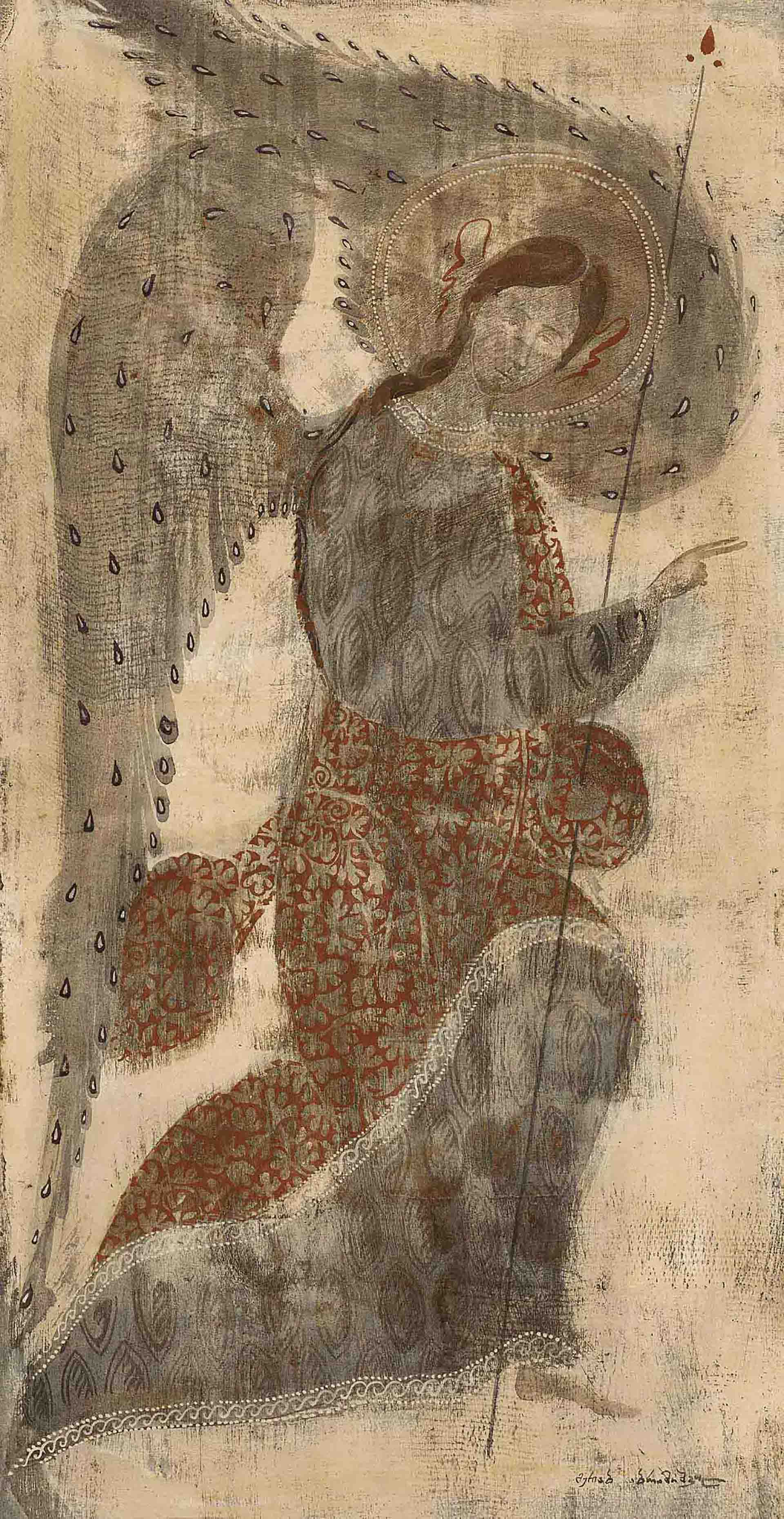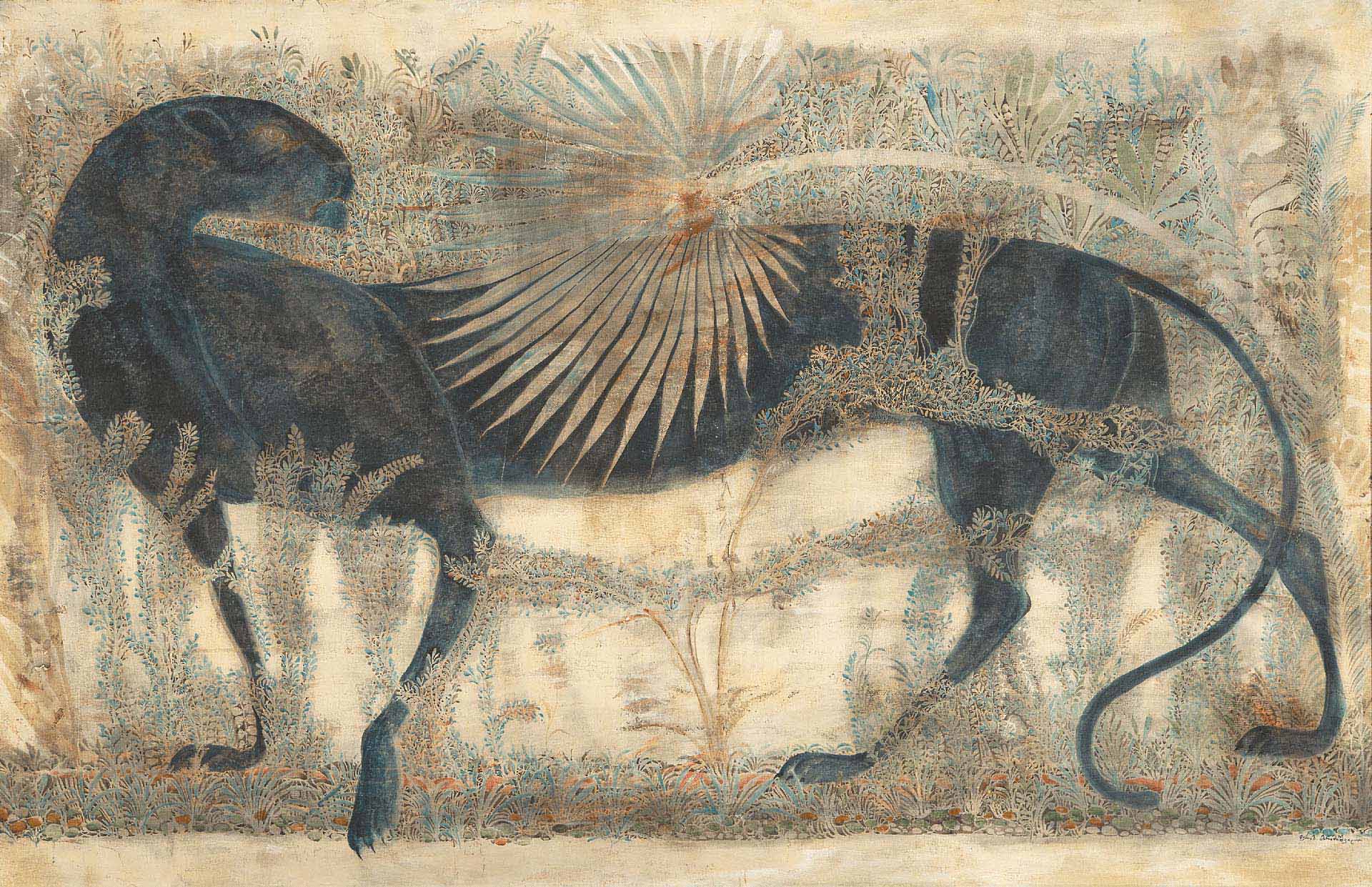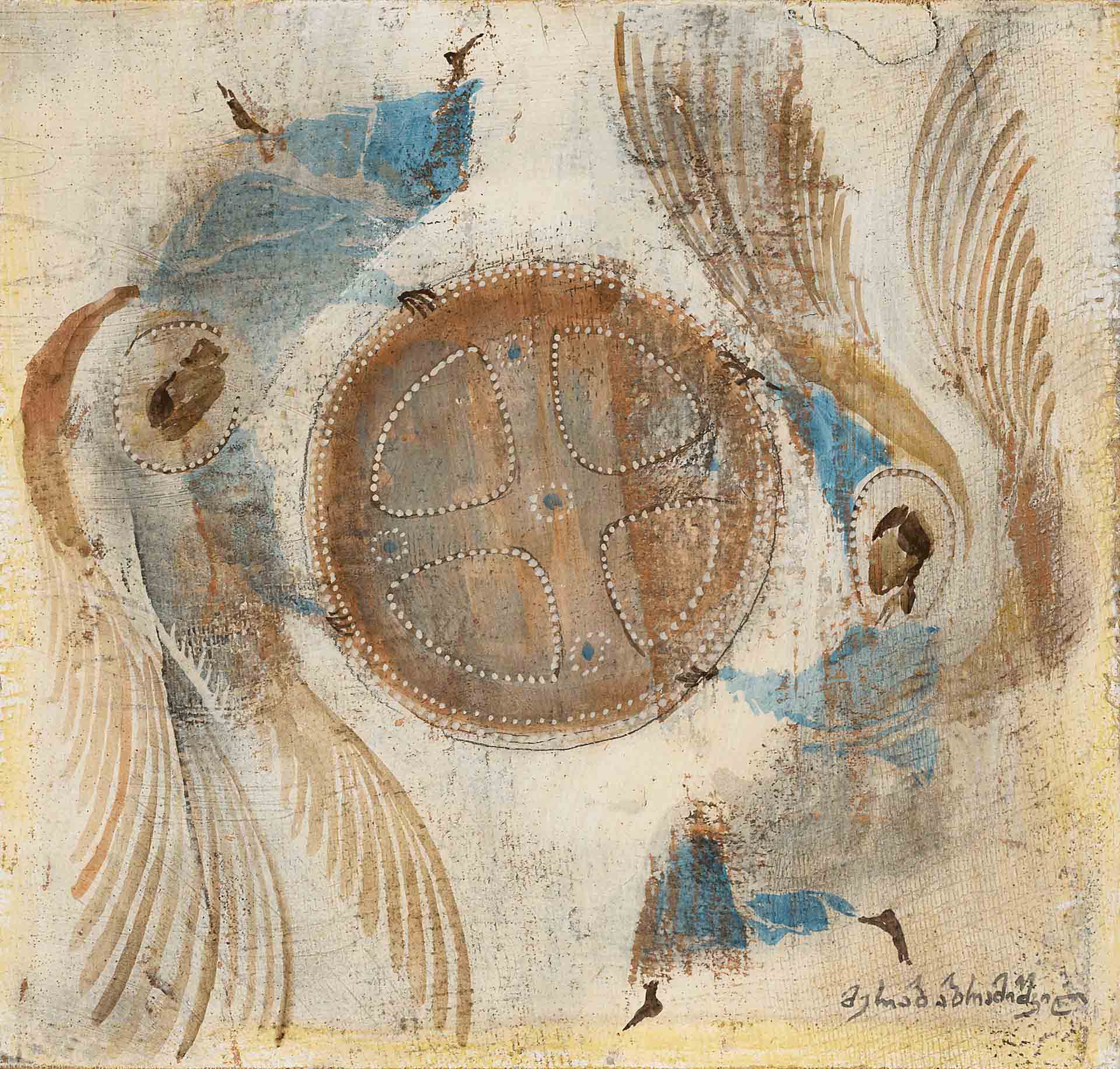
Feel free to add tags, names, dates or anything you are looking for


The existence of the Universe is originated from a garden, the Garden of Eden. Merab Abramishvili is a a creator of a garden. A garden is his desirable world, more precisely, archetype model of a garden – ‘A Garden of Eden’. His painting is totally linked with the ‘Paradise’ topos and dedicated to the pleasure while ‘being in’ the garden and the dangerous adventure while ‘being out’ of it.


‘Dog – Rose’ tempera on plywood, 76x152,5cm. 2003. Photo by Gia Chkhatarashvili
In general, his, as an artist’s, memory is managed by mythological-religious archetype models and fed by the impulses of a culture chronicler. Although, this is not a knowledgeable or imitational modification of archetypes, it’s rather an intuitive access to shoreless and obscure layers of the Universe.

‘Gabriel’ tempera on plywood, 61,5x32cm. 2002. Photo by Gia Chkhatarashvili
Therefore, any image in his art acquires the significance of a symbol. His painting is a simultaneous process of identification with objects of different cultures and detachment from them at the same time.

‘Pomegranate’ tempera on plywood, 215x110cm. 2003. Photo by Gia Chkhatarashvili
He creates semiotic system of icons, when the image is manifested not only by its standard story, but rather acts through the meaning and code, assigned by the artist. That’s why his ‘Black Panther’, ‘Piano’, ‘Dog-rose, ‘Man-eaters of Kumaon’, ‘Silk road’, ‘Gethsemane garden’ have been established as iconographic images in Georgian culture, just like Pirosmani’s ‘Black lion’, ‘Fishermen’, ‘Ortachala beauty’, David Kakabadze’s ‘Imereti landscape’, etc.
 ‘Silk Road’ tempera on plywood, 38x150cm. 2003. Photo by Gia Chkhatarashvili
‘Silk Road’ tempera on plywood, 38x150cm. 2003. Photo by Gia Chkhatarashvili
Perfection is a tool he acts with, as an artist. All models, that he selects, are made perfect: to the maximum extent of a form, plastics and dynamics, when an image becomes ‘ideally’ perfect. The models’ resource is manifested by a maximum scrutiny- from a perspective of physical and emotional expression.
 ‘Tree’ tempera on plywood, 152X70cm. 2002. Photo by Gia Chkhatarashvili
‘Tree’ tempera on plywood, 152X70cm. 2002. Photo by Gia Chkhatarashvili
He draws plants in a strange manner - in a full length, with their roots, as if he follows their hidden, underground image. Such model of an image expresses his position in painting. He, as an artist, also follows the roots of culture - not only Georgian, but the coordinates of the World culture.
 ‘Black panther’ tempera on plywood, 52x100cm. 2005. Photo by Gia Chkhatarashvili
‘Black panther’ tempera on plywood, 52x100cm. 2005. Photo by Gia Chkhatarashvili
Due to the fact that, out of the contexts of the world ‘creation’, the topic of the Heaven and its restoration attempt is most important for the artist, the ‘objects’ for his pictures are chosen from the Heaven - animals, plants, religious characters, bodened by aerility and ethereality of the first-born.
 ‘Paradise’ tempera on plywood, 122х244cm. 1993. Photo by Gia Chkhatarashvili
‘Paradise’ tempera on plywood, 122х244cm. 1993. Photo by Gia Chkhatarashvili
Namely, he creates a diagram of a plant, follows roots and leaves, examines its structure, demonstrates ‘extraordinariness’ of each and every object, surrounding us, reminds us of the beauty of the things, we are used to.
 ‘Elevation of the Holy Cross’ tempera on plywood, 20X20,5cm. 2004, Photo by Gia Chkhatarashvili
‘Elevation of the Holy Cross’ tempera on plywood, 20X20,5cm. 2004, Photo by Gia Chkhatarashvili
These objects and religious topics create the ‘scenario’ of Merab Abramishvili’s painting which is not determined by any certain religious-cultural area.
 ‘Jerusalem’ tempera on plywood, 73x150cm. 2006. Photo by Gia Chkhatarashvili
‘Jerusalem’ tempera on plywood, 73x150cm. 2006. Photo by Gia Chkhatarashvili
Radical contrast of cultures, like eastern and western, Christian and Islamic, reach strange equilibrium in his painting. He, being an artist, is a supporter of ‘Globalization of culture’ and a follower of universal values. Therefore, his, as an artist’s, significance violates the boundaries of local national style and acquires an international status.
He applies fresco and iconographic technologies in his works and has, so far, no followers. He ‘borrows’ techniques from the Past, studies the experience of Georgian fresco painting, transforms the monumental painting and the gesso technique, with certain alterations, into easel format.
 ‘Entering Jerusalem’ tempera on plywood, 66x150cm. 2004, Photo by Gia Chkhatarashvili
‘Entering Jerusalem’ tempera on plywood, 66x150cm. 2004, Photo by Gia Chkhatarashvili
At last, it does not definitely matter, the art-work is created by different culture codes or by stating the topic first, everything is transformed into the category of Beauty, which provokes the same feeling of admiration, which their author enjoyed towards the Universe.